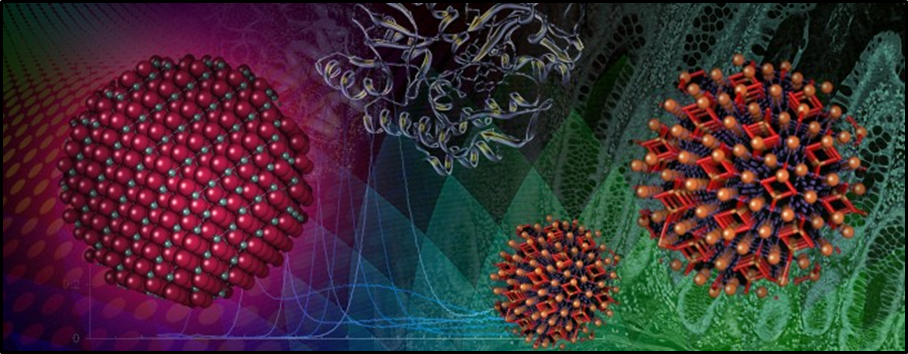Double-walled carbon nanotubes (DWCNTs) are formed by two concentric SWCNTs and are therefore called "double-walled" nanotubes. The diameter of the DWCNTs is normally greater than that of the SWNTs, and it grows with the number of walls, being able to reach up to a few tens of nanometers.
They have a variety of applications in different sectors and they will be discussed in detail in this article. Moreover, the structure and properties of DWCNTs are also discussed briefly.
Structure of Double Walled Carbon Nanotubes
The structure of DWCNTs consists of two layers of graphite sheets concentrically wounded with a space of 0.36 nm between them, with an external diameter of 10 to 50 nm, where each carbon atom is joined with three others by Sp2 hybridization, the fourth carbon atom forms weak bond of the Van der Wall type with other graphite sheets.
5 Properties of DWCNTs
1. Electronically, DWCNTs can behave as semi-metallic, insulating, or metallic material dependent on their elasticity and diameter. Its one-dimensional quantum electronic behavior has been demonstrated.
Researches at Rice University discovered that double-walled carbon nanotubes share the better sides of both single walled and multi walled carbon nanotubes when it comes to electrical conductivity and resisting difficult conditions.
Moreover, their research have shown that the distance between the two walls, "individual chiraliy" of the tubes, as well as the inner diameter, have significant effects onDWCNT's electrical properties.
2. New studies recommend that DWCNTs could be used in flat screens because of their good capacity as electron emitters.
3. It has been proven that double-walled carbon nanotubes have higher flexibility and higher mechanical strength than carbon fibers.
4. Double-Walled's properties can be adapted by summarizing metals in its interior, obtaining electrical or magnetic nanowires or gases, which can be used for the storage of hydrogen or as a gas separation system.
5. DWNTs are stable even at 2,800 0C in a vacuum, and 750 °C in air.
Applications of DWNTs
Some important applications of Double-walled Carbon Nanotubes have been discovered in recent years:
In 2016, the incorporation of oxygen and fluoride on the surface of carbon nanotubes was reported. This was done in order to achieve the dispersion of the double-walled carbon nanotubes in polar solvents, especially in water, with potential applications in the separation of oil emulsions in water.
Another of the important applications of DWCNTs is its use for shielding, this is due to the increase of the resistance property. In addition, it has been reported that they can be used in different types of armoring, where electromagnetic, acoustic and shielding impact stands out.
In the area of energy storage, it is important to mention that DWCNTs play an important role in the storage of hydrogen, besides presenting a viable alternative in energy storage cells.
A study was recently reported on obtaining a composition based on carbon nanotubes with chitosan, which presented important applications as a CO2 absorbent. (What is Chitosan? It is a type of a sugar obtained from outer shells of shellfish. Its main applications are in medicine.)
In 2017, a study was reported on the development of a nanosensor, based on carbon nanotubes with antibodies against Brucella. The study found that the nanosensor has potential applications in detecting Brucellosis easily and quickly.

In 2018, the functionalization of carbon nanotubes with fructose was reported to obtain a nanocomposite based on starch, the function of the DWCNTs with D-fructoseis to obtain a biomolecule used as a nonfertilizer in the polymeric matrix of the starch. In this study, films were obtained by the casting method and it was found that the nanocomposite showed excellent homogeneity, because carbon nanotubes were modified with acidic groups on the surface and in this way, they interacted easily with starch through interactions of hydrogen-type bridges.
5 Uses of Double-walled carbon nanotubes in the development of gas sensor
1. Carbon nanotube gas sensor has fast response, low power consumption, high sensitivity, small size, and lower working temperature and many other characteristics.
2. Carbon nanotubes are one of the developments of the ideal nanomaterials solid-state sensor technology huge aspect ratio and specific surface area of the carbon nanotube sensor can become highly sensitive material layer and efficient driving channel.
3. Carbon nanotubes can easily integrate microelectronic devices, it is possible to produce a sensor having a plurality of small arrays of sensors.
4. Carbon nanotube gas sensor can operate at room temperature; without heating means to reduce the volume of the sensor, the sensor reduces the energy consumption, so that the central element can be increased in length, while also extending the useful life of the sensor battery.
5. Carbon nanotube gas sensor has been capable of physical security, industrial and environmental protection.
Other industrial applications of Double Walled Carbon Nanotubes
By adding small amounts of double-walled carbon nanotubes to polymers, they change their electrical properties and this gives rise to more industrial applications:
DWCNTs in Biomedicine: Researchers from Italian universities have grown nerve cells in substrates, covered by networks of carbon nanotubes, and they found an increase in the neuronal signal transferred between cells. As DWCNTs are similar in shape and size to nerve cells, they can help restructure and reconnect damaged neurons.
DWCNTs in Automobiles: Anti-static fuel hoses, conductive plastic arts for painted electrostatic spray.
DWCNTs in Aerospace: Parts of aircraft.
DWCNTs in Packaging: Antistatic for electronics.
DWCNTs in Conductive inks: Carbon nanotubes have been used in the preparation of Conductive inks.
DWCNTs in Extremely black materials: The darkest substance known, to date, has been created from carbon nanotubes. The material was made into a matrix of low-density carbon nanotubes, arranged vertically. The reflection rate of the material is three times lower than what had been achieved so far. This substance of carbon nanotubes is very good at absorbing light, but very bad to reflect it. The group of American researchers, belonging to the Rensselaer Polytechnic Institute of Troy, assure that it is the closest thing that exists to the black body (an ideal body that absorbs light of all wavelengths and from all possible angles). It is expected that the development of these materials has applications in the fields of electronics and in the field of solar energy.
DWCNTs in Sports: Due to the high mechanical strength of the nanotubes, they are beginning to be used to make tennis racquets, bicycle handlebars, and golf items.
Conclusion
Double-walled carbon nanotubes present important and interesting applications in different sectors, ranging from energy storage applications to armoring applications. This is due to their exceptional chemical and physical properties, for this reason, it is very important to study them in order to develop new and improved materials.





Comments
Post a Comment